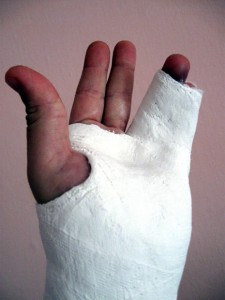Most fractures of the upper extremities are usually treated with surgery. Your doctor will note in his medical records the progress you have made in recovering such as the amount of pain you are experiencing and your ability to move the arm in different directions as well as use your hand for gripping and performing fine fingering actions such as writng and picking up small objects. Also, he will order periodic x-rays to determine how much healing of the fracture has occurred. The issue of the degree of healing of the fracture is very critical.  In most cases, the fracture goes on to heal; however, x-rays may show that healing has not occurred satsfactorily or reveal what is called a nonunion where the fracture shows no sign of healing. If despite continuing surgical management nonunion of the fracture continues and function of the upper extremity is not restored or be expected to be restored withing 12 months, then your chance of receiving benefits is high.
In most cases, the fracture goes on to heal; however, x-rays may show that healing has not occurred satsfactorily or reveal what is called a nonunion where the fracture shows no sign of healing. If despite continuing surgical management nonunion of the fracture continues and function of the upper extremity is not restored or be expected to be restored withing 12 months, then your chance of receiving benefits is high.
Social security rules state that a physical impairment must last at least 12 months or be expected to last that long. You must also be under continuous care by your doctor who performed your surgery. You may have needed further surgery for various reasons such as complications from surgery including infections. Occasionally, the state may require you to attend a physical examination to determine the extent of your arm and hand function. Also, they will ask you to provide information regarding how your impairment affects your ability to perform everyday activities. In addition, Social Security has certain considerations which enter into one’s ability to be granted benefits which include your age and past work history.
I am a claims examiner who formerly reviewed disability cases over many years for social security and understand what is the important information needed to improve chances for approval by the state.